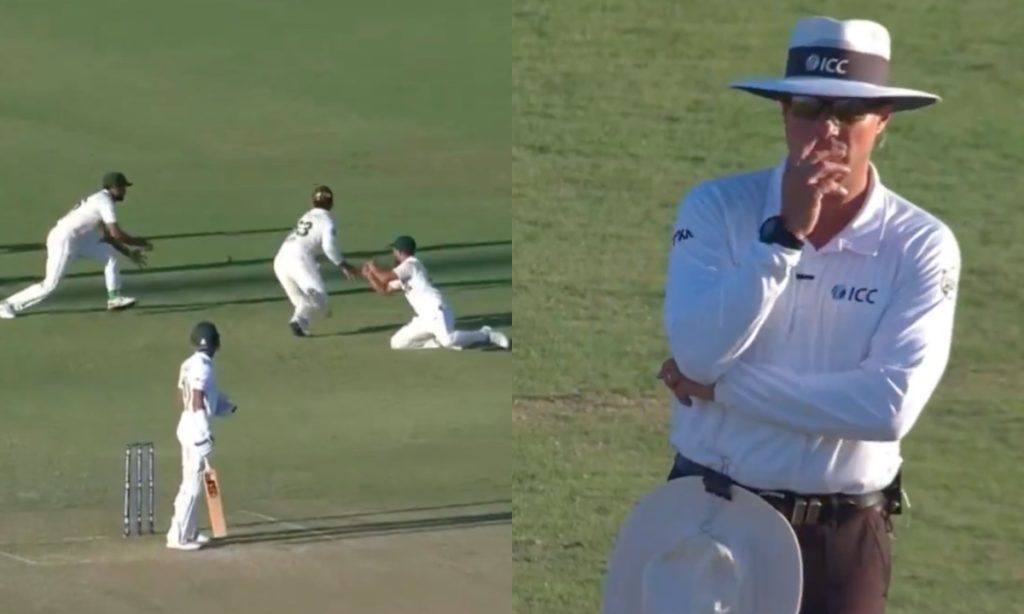In the cricketing arena, where every run, every ball, and every catch can turn the tide of a match, the recent Test between Pakistan and Bangladesh at Rawalpindi Cricket Stadium was a testament to the unpredictable nature of the sport. However, what stood out wasn’t just the strategic gameplay or individual brilliance but the fielding performance—or the lack thereof—by Pakistani fielders, which left spectators, analysts, and even the umpire in a state of shock.
The match, already intense with its implications for the series, took an unexpected turn when Pakistani fielders, known for their agility and sharpness, dropped catches that could be described as regulation. The most notable incident occurred when Saud Shakeel, a usually reliable fielder, dropped a straightforward catch on the very first ball of Bangladesh’s innings. The ball, bowled by Mir Hamza, was hit by Shadman Islam straight to Shakeel at a comfortable position, but it slipped through his hands, adding to Pakistan’s woes.
Pakistan Cricket Heritage pic.twitter.com/19j9XfapYr
— Danish (@PctDanish) August 31, 2024
This moment wasn’t just a lapse in concentration; it was a spectacle of fielding gone awry. The umpire, Adrian Holdstock, known for his composure, couldn’t hide his reaction. A slight shake of the head, a look of disbelief, perhaps, conveyed more than words could. This incident wasn’t isolated; there were other drops throughout the match, each contributing to Bangladesh’s unexpected dominance.
The Pakistani team, under scrutiny for their fielding, seemed to be grappling with more than just the physical act of catching. There was a visible dip in morale, a ripple effect from these errors that seemed to affect their overall game. The umpire’s reaction, subtle yet telling, reflected a broader sentiment among cricket enthusiasts. Fielding, often underestimated in its impact, was proving to be Pakistan’s Achilles’ heel in this match.
The narrative of this Test wasn’t just about runs scored or wickets taken but about the moments where the ball didn’t stick in Pakistani hands. Each dropped catch was not just a missed opportunity but a psychological blow, adding pressure to an already tense game. The umpire, in his role, had to remain impartial, but his reactions were human, showing that even officials can be taken aback by the unpredictability of cricket.
This match highlighted a critical aspect of cricket often overshadowed by batting and bowling heroics: the importance of fielding. While fans and analysts discuss strategies and individual performances, the fielding lapses by Pakistan served as a stark reminder that cricket is a game of inches, where a dropped catch can lead to a cascade of events, ultimately deciding the fate of a match.
The aftermath saw discussions not just on Pakistan’s batting or bowling strategies but on their fielding drills. Cricket, at its core, demands excellence in all facets, and this Test match was a lesson in humility for Pakistan, reminding them and the cricketing world that every aspect of the game deserves equal attention and respect.
As the series progresses, the focus on Pakistan’s fielding will undoubtedly intensify. For now, the images of those dropped catches, the umpire’s subtle reactions, and the collective gasp of the crowd remain etched in memory, a testament to how cricket can surprise even the most seasoned observers.

